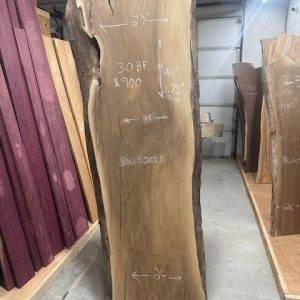Find Your Perfect Wood Product
If you find a product you like, reach out to us for more details and assistance.
Olive Wood Slabs
Olivewood is an exotic wood that is native to Europe, Africa, and the Middle East. It has a sentimental and religious significance to several cultures and religions. The wood is hard and strong, and has fantastic working characteristics, making it a favorite for wood turning and carving. What makes this hardwood so unique is the extraordinary grain pattern of each individual piece, as well as the distinctive and inviting fragrance that it gives off. It even becomes darker, richer, and more beautiful in color as it ages! It has long been a favorite for religious, historical, and artistic artifacts. It finishes very smoothly, to a high polish.
Length: 48-95″
Thickness: 4/4, 5/4
- Common Name(s): Olive Wood
- Scientific Name: Olea europaea
- Distribution: Mediterranean regions, primarily southern Europe, northern Africa, and western Asia
- Tree Size: 25-50 ft (8-15 m) tall, 2-4 ft (0.6-1.2 m) trunk diameter
- Average Dried Weight: 61 lbs/ft³ (980 kg/m³)
- Janka Hardness: 2,700 lbf (12,010 N)
- Crushing Strength: Not specified
Heartwood: Cream or yellowish brown, frequently with darker brown or black contrasting streaks.
Sapwood: Pale yellow or light brown, not always sharply demarcated from heartwood.
Grain: Straight, wavy, or wild.
Texture: Fine texture with a moderate natural luster.
Rated as durable, though susceptible to insect attack.
Olive wood is generally easy to work, although it can sometimes have interlocked grain, which can cause tearout during planing. It turns, glues, and finishes well, polishing to a high luster.
- Furniture
- Veneer
- Turned objects
- Specialty wood items
- Decorative pieces






Olive wood is highly prized for its distinct appearance and fine texture. Its striking grain patterns make it a favorite for decorative applications. The wood can be challenging to source in large sizes and may be available in limited quantities.
Note: Olive wood is not listed in the CITES Appendices or on the IUCN Red List of Threatened Species, which means it is not currently considered at risk. However, sustainable sourcing practices are recommended to ensure its continued availability.